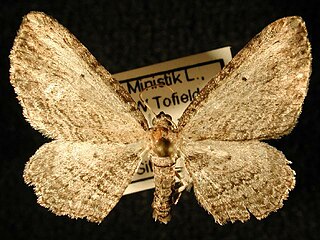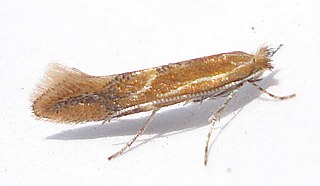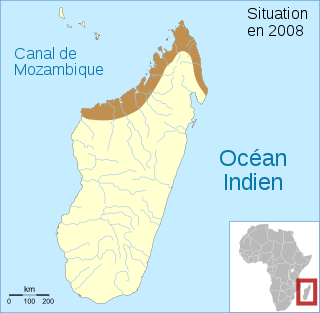Following is a list of holidays in Romania.

The Winkler Prins is a Dutch encyclopedia, founded by the Dutch poet and clergyman Anthony Winkler Prins (1817-1908) and published by Elsevier, which ran through 9 editions; the first, issued in 16 volumes from 1870 to 1882, and the last, numbering 26 volumes, from 1990 to 1993. As to the contents, this final edition, titled De Grote Winkler Prins is one of the most comprehensive works of its kind published so far in any country, containing more than 200,000 articles and references; such prominent scholars and journalists as Frits Staal and G.B.J. Hiltermann are among the editors. Today an online subscription-based version is available.

Gracillariidae is an important family of insects in the order Lepidoptera and the principal family of leaf miners that includes several economic, horticultural or recently invasive pest species such as the horse-chestnut leaf miner, Cameraria ohridella.
Afrixalus wittei is a species of frog in the family Hyperoliidae. Its common name is De Witte's spiny reed frog. It is found in Angola, Democratic Republic of the Congo, Tanzania, and Zambia.
De Witte's clawed frog, Xenopus wittei, is a species of frog in the family Pipidae found in the Democratic Republic of the Congo, Rwanda, Uganda, and possibly Burundi. Its natural habitats are subtropical or tropical moist montane forests, subtropical or tropical high-altitude grassland, rivers, swamps, freshwater lakes, intermittent freshwater lakes, freshwater marshes, intermittent freshwater marshes, arable land, pastureland, rural gardens, water storage areas, ponds, and canals and ditches.
Amietia wittei is a species of frog in the family Pyxicephalidae. It is found in Kenya and Tanzania, including Mount Elgon in the Kenya/Uganda border. Its type locality is in Molo, Kenya, located near the top of the Mau Escarpment. The specific name wittei honours Gaston-François de Witte, a Belgian naturalist.
The De Witte's snout-burrower is a species of frog in the Hemisotidae family, found in Democratic Republic of the Congo and Zambia. Its natural habitats are moist savanna, subtropical or tropical seasonally wet or flooded lowland grassland, intermittent freshwater marshes, and arable land.

Cameraria is a genus of moths in the family Gracillariidae, which includes many species of leaf miners. One of the best known species is the horse-chestnut leaf miner, Cameraria ohridella.

Eois is a genus of moths in the family Geometridae. The genus contains about 250 validly described species, most from the Neotropical region. Many species are still undescribed and the total number of species is estimated to be over a 1,000 in the Neotropical region alone. The genus was first described by Jacob Hübner in 1818.

Horisme is a genus of moths in the family Geometridae. The genus was described by Jacob Hübner in 1825.
Letheobia wittei, also known as De Witte’s gracile blind snake or Witte's beaked snake, is a species of snake in the family Typhlopidae. The species is endemic to Africa.

Phyllonorycter is a genus of moths in the family Gracillariidae.
David Michael "Dave" Prins is an English professional darts player.
Urodeta is a genus of moths of the family Elachistidae. The genus was originally assigned to the family Momphidae.

Blommersia wittei is a species of frog in the family Mantellidae. It is endemic to Madagascar. Its natural habitats are subtropical or tropical moist lowland forests, dry savanna, moist savanna, swamps, freshwater marshes, intermittent freshwater marshes, plantations, rural gardens, heavily degraded former forest, and ponds.
Teracotona wittei is a moth in the family Erebidae. It was described by Hubert Robert Debauche in 1942. It is found in the Democratic Republic of the Congo, Rwanda and Uganda.

De Prins van Oranje is a tower mill in Bredevoort, Gelderland, Netherlands which was built in 1870 and has beem restored to working order. The mill is listed as a Rijksmonument.

De Prins van Oranje is a tower mill in Buren, Gelderland, Netherlands which was built in 1716 and has been restored to working order. The mill is listed as a Rijksmonument.









